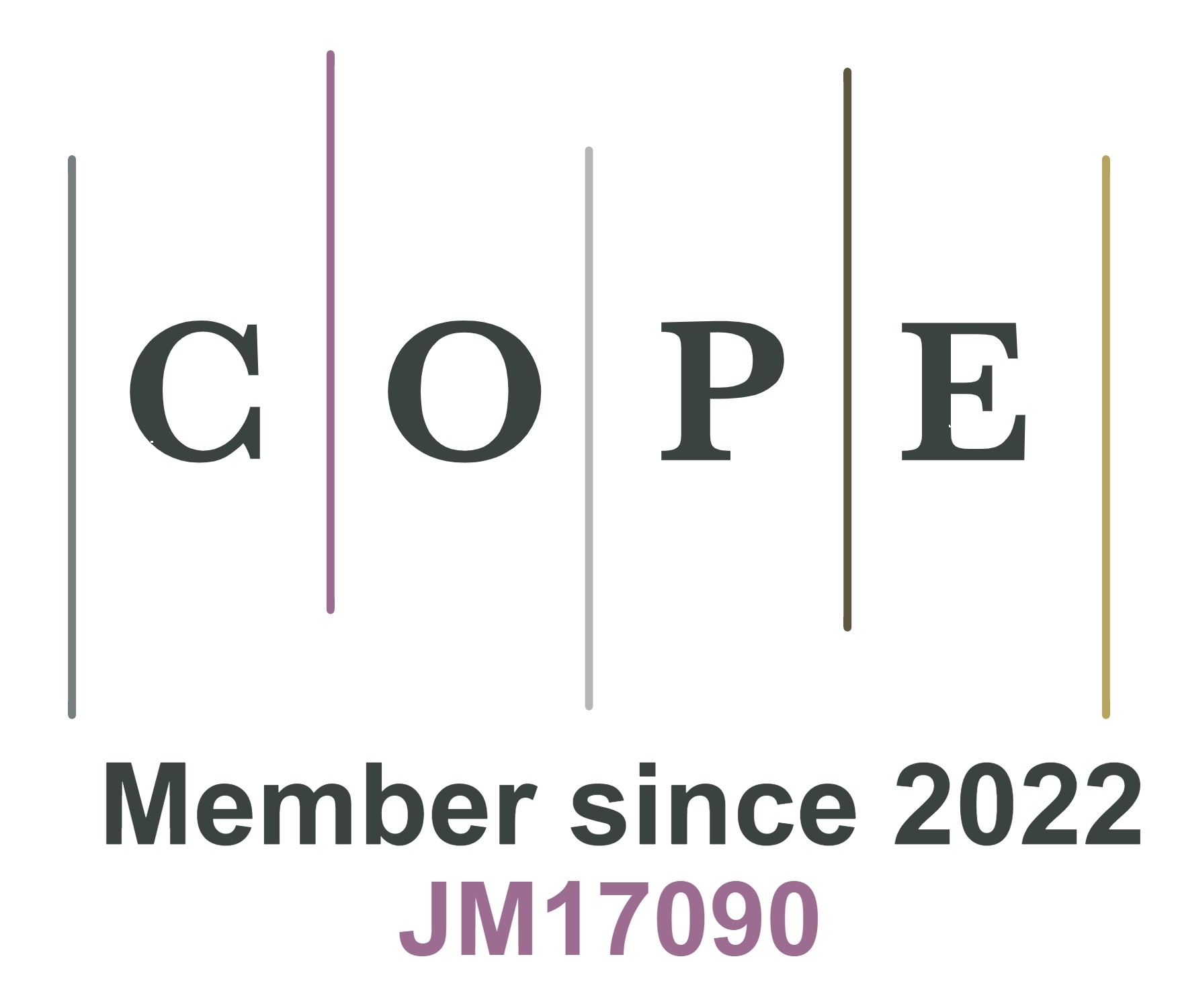REFERENCES
1. Tringides CM, Boulingre M, Khalil A, Lungjangwa T, Jaenisch R, Mooney DJ. Tunable conductive hydrogel scaffolds for neural cell differentiation. Adv Healthc Mater 2022:e2202221.
2. Freudenberg U, Atallah P, Limasale YDP, Werner C. Charge-tuning of glycosaminoglycan-based hydrogels to program cytokine sequestration. Faraday Discuss 2019;219:244-51.
3. Simpliciano C, Clark L, Asi B, et al. Cross-linked alginate film pore size determination using atomic force microscopy and validation using diffusivity determinations. J Surf Eng Mater Adv Technol 2013;03:1-12.
4. Rastogi P, Kandasubramanian B. Review of alginate-based hydrogel bioprinting for application in tissue engineering. Biofabrication 2019;11:042001.
5. Correa S, Grosskopf AK, Lopez Hernandez H, et al. Translational applications of hydrogels. Chem Rev 2021;121:11385-457.
6. Paulsen BD, Fabiano S, Rivnay J. Mixed ionic-electronic transport in polymers. Annu Rev Mater Res 2021;51:73-99.
7. Rong Q, Lei W, Liu M. Conductive hydrogels as smart materials for flexible electronic devices. Chemistry 2018;24:16930-43.
8. Distler T, Boccaccini AR. 3D printing of electrically conductive hydrogels for tissue engineering and biosensors - A review. Acta Biomater 2020;101:1-13.
9. Shur M, Fallegger F, Pirondini E, et al. Soft printable electrode coating for neural interfaces. ACS Appl Bio Mater 2020;3:4388-97.
10. Tondera C, Akbar TF, Thomas AK, et al. Highly conductive, stretchable, and cell-adhesive hydrogel by nanoclay doping. Small 2019;15:e1901406.
11. Bhat MA, Rather RA, Shalla AH. PEDOT and PEDOT:PSS conducting polymeric hydrogels: a report on their emerging applications. Synth Met 2021;273:116709.
12. Boehler C, Aqrawe Z, Asplund M. Applications of PEDOT in bioelectronic medicine. Bioelectron Med 2019;2:89-99.
13. Heo DN, Lee SJ, Timsina R, Qiu X, Castro NJ, Zhang LG. Development of 3D printable conductive hydrogel with crystallized PEDOT:PSS for neural tissue engineering. Mater Sci Eng C 2019;99:582-90.
14. Fu F, Wang J, Yu J. Interpenetrating PAA-PEDOT conductive hydrogels for flexible skin sensors. J Mater Chem C 2021;9:11794-800.
15. Lacour SP, Courtine G, Guck J. Materials and technologies for soft implantable neuroprostheses. Nat Rev Mater 2016;1:16063.
16. Ferlauto L, D’Angelo AN, Vagni P, et al. Development and characterization of PEDOT:PSS/alginate soft microelectrodes for application in neuroprosthetics. Front Neurosci 2018;12:648.
17. Shi H, Liu C, Jiang Q, Xu J. Effective approaches to improve the electrical conductivity of PEDOT:PSS: a review. Adv Electron Mater 2015;1:1500017.
18. Liu Y, Liu J, Chen S, et al. Soft and elastic hydrogel-based microelectronics for localized low-voltage neuromodulation. Nat Biomed Eng 2019;3:58-68.
20. Li G, Huang K, Deng J, et al. Highly conducting and stretchable double-network hydrogel for soft bioelectronics. Adv Mater 2022;34:e2200261.
22. Cheng T, Zhang Y, Wang S, et al. Conductive hydrogel-based electrodes and electrolytes for stretchable and self-healable supercapacitors. Adv Funct Mater 2021;31:2101303.
23. Wang K, Tian L, Wang T, et al. Electrodeposition of alginate with PEDOT/PSS coated MWCNTs to make an interpenetrating conducting hydrogel for neural interface. Compos Interfaces 2019;26:27-40.
24. Chikar JA, Hendricks JL, Richardson-Burns SM, Raphael Y, Pfingst BE, Martin DC. The use of a dual PEDOT and RGD-functionalized alginate hydrogel coating to provide sustained drug delivery and improved cochlear implant function. Biomaterials 2012;33:1982-90.
25. Yang B, Yao F, Ye L, et al. A conductive PEDOT/alginate porous scaffold as a platform to modulate the biological behaviors of brown adipose-derived stem cells. Biomater Sci 2020;8:3173-85.
26. Paradee N, Sirivat A. Electrically controlled release of benzoic acid from poly(3,4-ethylenedioxythiophene)/alginate matrix: effect of conductive poly(3,4-ethylenedioxythiophene) morphology. J Phys Chem B 2014;118:9263-71.
27. Babeli I, Ruano G, Puiggalí-jou A, Ginebra M, Alemán C, Garcia-torres J. Self-healable and eco-friendly hydrogels for flexible supercapacitors. Adv Sustain Syst 2021;5:2000273.
28. Guo J, Yu Y, Wang H, Zhang H, Zhang X, Zhao Y. Conductive polymer hydrogel microfibers from multiflow microfluidics. Small 2019;15:e1805162.
29. Madduma-bandarage USK, Madihally SV. Synthetic hydrogels: synthesis, novel trends, and applications. J Appl Polym Sci 2021;138:50376.
30. Ji D, Park JM, Oh MS, et al. Superstrong, superstiff, and conductive alginate hydrogels. Nat Commun 2022;13:3019.
31. Yuk H, Zhang T, Lin S, Parada GA, Zhao X. Tough bonding of hydrogels to diverse non-porous surfaces. Nat Mater 2016;15:190-6.
32. Feig VR, Tran H, Lee M, et al. An Electrochemical gelation method for patterning conductive PEDOT:PSS hydrogels. Adv Mater 2019;31:e1902869.
33. Inoue A, Yuk H, Lu B, Zhao X. Strong adhesion of wet conducting polymers on diverse substrates. Sci Adv 2020;6:eaay5394.
34. Yang J, Bai R, Chen B, Suo Z. Hydrogel adhesion: a supramolecular synergy of chemistry, topology, and mechanics. Adv Funct Mater 2020;30:1901693.
35. Azmi S, Frackowiak E. Redox activity from the electrolyte and electrode in electrochemical capacitors. Electrochem Commun 2022;138:107289.
36. Silva AC, Wang J, Minev IR. Electro-assisted printing of soft hydrogels via controlled electrochemical reactions. Nat Commun 2022;13:1353.
37. Silva AC, Akbar TF, Paterson TE, Werner C, Tondera C, Minev IR. Electrically controlled click-chemistry for assembly of bioactive hydrogels on diverse micro- and flexible electrodes. Macromol Rapid Commun 2022;43:e2200557.
38. Fernandes R, Wu L, Chen T, et al. Electrochemically induced deposition of a polysaccharide hydrogel onto a patterned surface. Langmuir 2003;19:4058-62.
39. Cheng Y, Luo X, Betz J, et al. In situ quantitative visualization and characterization of chitosan electrodeposition with paired sidewall electrodes. Soft Matter 2010;6:3177.
40. Gray KM, Liba BD, Wang Y, et al. Electrodeposition of a biopolymeric hydrogel: potential for one-step protein electroaddressing. Biomacromolecules 2012;13:1181-9.
41. Cheng Y, Luo X, Betz J, Payne GF, Bentley WE, Rubloff GW. Mechanism of anodic electrodeposition of calcium alginate. Soft Matter 2011;7:5677.
42. Kim E, Xiong Y, Cheng Y, et al. Chitosan to connect biology to electronics: fabricating the bio-device interface and communicating across this interface. Polymers 2015;7:1-46.
43. Liu Y, Zhang B, Gray KM, et al. Electrodeposition of a weak polyelectrolyte hydrogel: remarkable effects of salt on kinetics, structure and properties. Soft Matter 2013;9:2703.
44. Li J, Kim E, Gray KM, et al. Mediated electrochemistry to mimic biology’s oxidative assembly of functional matrices. Adv Funct Mater 2020;30:2001776.
45. Córdoba-torres P. Relationship between constant-phase element (CPE) parameters and physical properties of films with a distributed resistivity. Electrochim Acta 2017;225:592-604.
46. Hirschorn B, Orazem ME, Tribollet B, et al. Determination of effective capacitance and film thickness from constant-phase-element parameters. Electrochim Acta 2010;55:6218-27.
47. Sakmeche N, Aaron JJ, Fall M, et al. Anionic micelles; a new aqueous medium for electropolymerization of poly(3,4-ethylenedioxythiophene) films on Pt electrodes. Chem Commun 1996:2723.
49. Hutton LA, Vidotti M, Patel AN, Newton ME, Unwin PR, Macpherson JV. Electrodeposition of nickel hydroxide nanoparticles on boron-doped diamond electrodes for oxidative electrocatalysis. J Phys Chem C 2011;115:1649-58.
50. Kleber C, Lienkamp K, Rühe J, Asplund M. Electrochemically Controlled drug release from a conducting polymer hydrogel (PDMAAp/PEDOT) for local therapy and bioelectronics. Adv Healthc Mater 2019;8:e1801488.
51. Bazylevich A, Patsenker LD, Gellerman G. Exploiting fluorescein based drug conjugates for fluorescent monitoring in drug delivery. Dye Pigment 2017;139:460-72.
52. Jamwal HS, Chauhan GS. Designing silica-based hybrid polymers and their application in the loading and release of fluorescein as a model drug and diagnostic agent. Adv Polym Technol 2018;37:411-8.
53. Bagheri B, Zarrintaj P, Surwase SS, et al. Self-gelling electroactive hydrogels based on chitosan-aniline oligomers/agarose for neural tissue engineering with on-demand drug release. Colloids Surf B Biointerfaces 2019;184:110549.
54. Liang Y, Zhao X, Hu T, et al. Adhesive hemostatic conducting injectable composite hydrogels with sustained drug release and photothermal antibacterial activity to promote full-thickness skin regeneration during wound healing. Small 2019;15:e1900046.
55. Qu J, Liang Y, Shi M, Guo B, Gao Y, Yin Z. Biocompatible conductive hydrogels based on dextran and aniline trimer as electro-responsive drug delivery system for localized drug release. Int J Biol Macromol 2019;140:255-64.
56. Qu J, Zhao X, Ma PX, Guo B. Injectable antibacterial conductive hydrogels with dual response to an electric field and pH for localized “smart” drug release. Acta Biomater 2018;72:55-69.
57. Bansal M, Dravid A, Aqrawe Z, Montgomery J, Wu Z, Svirskis D. Conducting polymer hydrogels for electrically responsive drug delivery. J Control Release 2020;328:192-209.
58. Park Y, Jung J, Chang M. Research progress on conducting polymer-based biomedical applications. Appl Sci 2019;9:1070.
59. Cao Y, Samy KE, Bernards DA, Desai TA. Recent advances in intraocular sustained-release drug delivery devices. Drug Discov Today 2019;24:1694-700.










